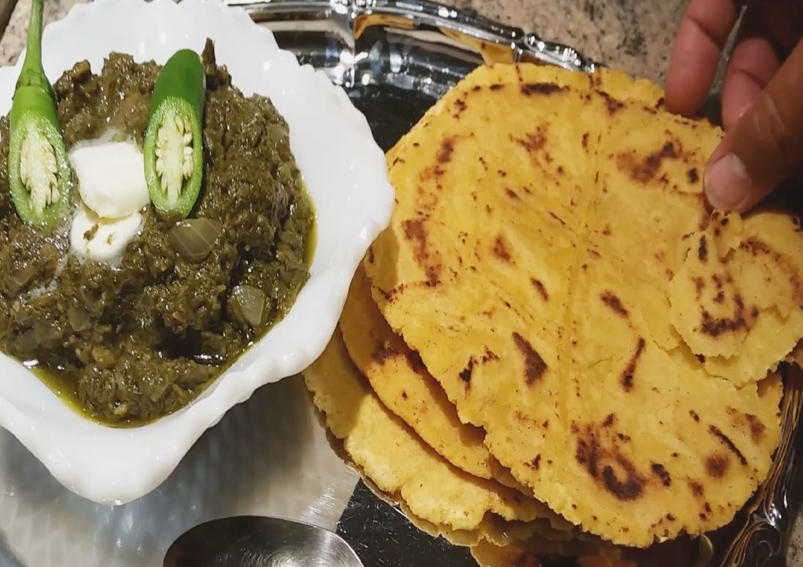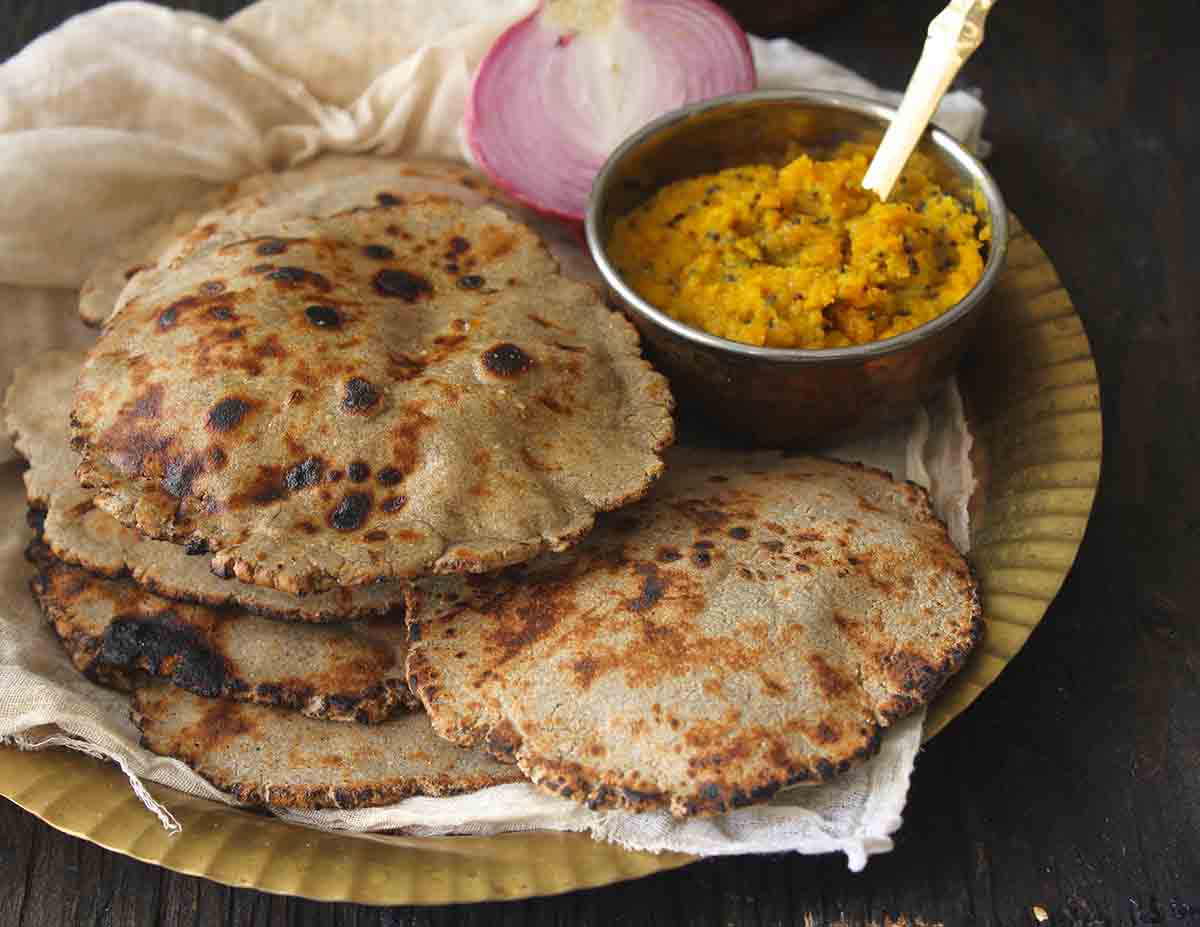Embark on a culinary adventure as we delve into the secrets of authentic roti, a flatbread that holds a cherished place in the culinary traditions of many cultures. From the humble ingredients to the intricate techniques, this guide will unveil the art of crafting perfect roti that will tantalize your taste buds and transport you to the heart of culinary heritage.
With each step, we will explore the significance of traditional ingredients, the nuances of kneading and shaping, and the mastery of cooking techniques. Along the way, we will uncover the cultural significance of roti, its regional variations, and innovative ways to enjoy this versatile flatbread.
Authentic Roti Ingredients
The authenticity of roti lies in its traditional ingredients. Let’s delve into their significance:
Atta flour: The foundation of roti, atta flour is a whole-wheat flour that imparts a wholesome flavor and texture. Its coarse texture creates a chewy and flavorful roti.
Water: The binding agent that brings the dough together, water plays a crucial role in determining the consistency of the roti. The amount of water used should be just enough to form a soft and pliable dough.
Salt: A subtle yet essential ingredient, salt enhances the flavor of the roti. It balances the sweetness of the flour and creates a harmonious taste profile.
Optional Ingredients
While the above ingredients form the core of an authentic roti, certain optional ingredients can further enhance its flavor and texture:
- Ghee or oil: Adding ghee or oil to the dough imparts a rich, nutty flavor and a slightly crispy texture to the roti. It also helps prevent the roti from sticking to the pan.
Kneading and Dough Preparation
The quality of authentic roti heavily relies on the dough’s consistency and proper kneading techniques. An ideal roti dough should be soft, pliable, and slightly sticky, allowing it to be rolled out thinly without tearing.
To achieve this, follow these steps:
Kneading the Dough
- In a large bowl, combine the flour and salt. Gradually add water while mixing with your hands until a dough forms.
- Knead the dough vigorously for 5-7 minutes until it becomes smooth and elastic.
- If the dough is too sticky, add a little more flour. If it’s too dry, add a little more water.
Resting the Dough
Once the dough is kneaded, cover it with a damp cloth and let it rest for at least 30 minutes. This resting period allows the gluten to relax, making the dough easier to roll out.
Rolling and Shaping Roti

Traditionally, rolling roti involves the use of a rolling pin known as a belan. The process begins with dividing the dough into small, equal-sized balls.
To achieve even thickness and circular shape, the dough ball is placed on a lightly floured surface and flattened with the palm of the hand. Using the belan, roll out the dough in a circular motion, applying even pressure. The roti should be rotated regularly to ensure uniform thickness.
Creating Puffed Edges
The signature puffed edges of authentic roti are created by applying heat. After rolling out the roti, place it on a hot griddle or tawa. As the roti cooks, bubbles will form on the surface. Using a spatula, gently press down on the bubbles to create pockets of air.
This technique allows the roti to puff up and develop its characteristic texture.
Cooking Roti
Cooking authentic roti requires the right heat and cooking surface. A traditional tawa or griddle, made of cast iron or steel, is ideal for achieving the desired texture and flavor. The tawa should be heated over medium to high heat, providing an even cooking surface.To
ensure even cooking, roti should be flipped and rotated regularly. Using a spatula or tongs, gently flip the roti to cook the other side. As it cooks, rotate the roti to prevent burning and promote even browning.
Using a Tawa or Griddle
A tawa or griddle is a flat, circular cooking surface traditionally used for making roti. It provides an even heat distribution and allows for precise temperature control. The heavy weight of the tawa helps retain heat, ensuring the roti cooks evenly throughout.
Serving and Accompaniments

Traditionally, authentic roti is served alongside curries, lentils, or vegetables. These accompaniments provide a flavorful complement to the plain taste of roti, creating a balanced and satisfying meal.
Curries
- Roti is a staple accompaniment to various curries, including chicken, lamb, vegetable, and fish curries. The rich and aromatic flavors of the curry sauces infuse the roti, enhancing its taste and texture.
Lentils
- Lentils, cooked in flavorful spices and seasonings, provide a hearty and nutritious pairing with roti. The soft and creamy texture of the lentils complements the chewy texture of the roti, creating a satisfying combination.
Vegetables
- Roti can also be served with a variety of sautéed or grilled vegetables, such as potatoes, onions, peppers, and eggplant. The fresh and vibrant flavors of the vegetables add a refreshing contrast to the roti.
Innovative Serving Ideas
- Beyond traditional accompaniments, roti can be used in innovative ways to create unique dishes.
- For instance, roti can be torn into pieces and added to soups or stews, providing a hearty and flavorful addition.
- Roti can also be used as a wrap for sandwiches or burritos, filled with your favorite ingredients.
- Additionally, roti can be used to make wraps, quesadillas, or even pizza crusts.
Cultural Significance
Roti holds immense cultural and historical significance in various regions, deeply intertwined with traditions and celebrations.
In India, roti is considered a staple food and a symbol of nourishment. It is often served as part of a thali, a traditional Indian meal, and is accompanied by various curries, vegetables, and chutneys.
Role in Festivals and Celebrations
Roti plays a central role in many traditional festivals and celebrations. During Diwali, the festival of lights, roti is often prepared with ghee (clarified butter) and adorned with edible silver leaf, symbolizing prosperity and abundance.
In Punjab, during the harvest festival of Lohri, roti is cooked on a bonfire and shared among family and friends, representing the spirit of community and the joy of the harvest.
Culinary Heritage and Traditions
Roti is a testament to the culinary heritage and traditions of different cultures. In many parts of the world, the preparation of roti is passed down through generations, with each family having its own unique recipe and technique.
The texture, flavor, and shape of roti can vary depending on the region and the type of flour used. In northern India, roti is typically made with whole wheat flour and has a slightly chewy texture, while in southern India, it is often made with rice flour and has a softer, more pliable texture.
Variations and Regional Differences
Roti is a versatile dish that varies significantly across regions, reflecting cultural influences and local ingredients. These variations showcase the diversity of roti preparations and culinary traditions around the world.
Cultural influences have played a significant role in shaping roti’s diversity. In the Caribbean, for example, roti was introduced by Indian immigrants and has become an integral part of the local cuisine, incorporating influences from both Indian and Caribbean traditions.
Regional Variations
- India: In India, roti varies greatly from region to region. In North India, roti is typically made with wheat flour and cooked on a tawa (flat griddle). In South India, roti is often made with rice flour and cooked on a dosa pan.
- Pakistan: In Pakistan, roti is typically made with wheat flour and cooked on a tawa. It is often served with curries, lentils, or vegetables.
- Bangladesh: In Bangladesh, roti is typically made with wheat flour and cooked on a tawa. It is often served with fish, meat, or vegetables.
- Nepal: In Nepal, roti is typically made with wheat flour and cooked on a tawa. It is often served with dal (lentils), vegetables, or meat.
- Caribbean: In the Caribbean, roti is typically made with wheat flour and cooked on a tawa. It is often filled with curried vegetables, meat, or fish.
Last Recap
As you embark on your roti-making journey, remember that the true essence of this culinary art lies in the passion and dedication you bring to the process. With patience, practice, and a touch of creativity, you will unlock the secrets of authentic roti and create a dish that not only nourishes your body but also connects you to the rich tapestry of culinary traditions.
Helpful Answers
What is the key to achieving the perfect roti texture?
The secret lies in the dough’s consistency and the technique used to knead it. The dough should be neither too wet nor too dry, and it should be kneaded until it becomes smooth and elastic. This will ensure that the roti cooks evenly and develops the signature soft and chewy texture.
How can I create the signature puffed edges on my roti?
To achieve those irresistible puffed edges, gently press down on the edges of the roti while it cooks on the tawa. This will create small air pockets that expand during cooking, resulting in the characteristic puffed texture.
What are some creative ways to serve roti?
While roti is traditionally served with curries and lentils, there are endless possibilities for innovative pairings. Try using roti as a wrap for your favorite fillings, creating roti tacos or quesadillas, or even experimenting with sweet fillings like fruit compote or Nutella.
